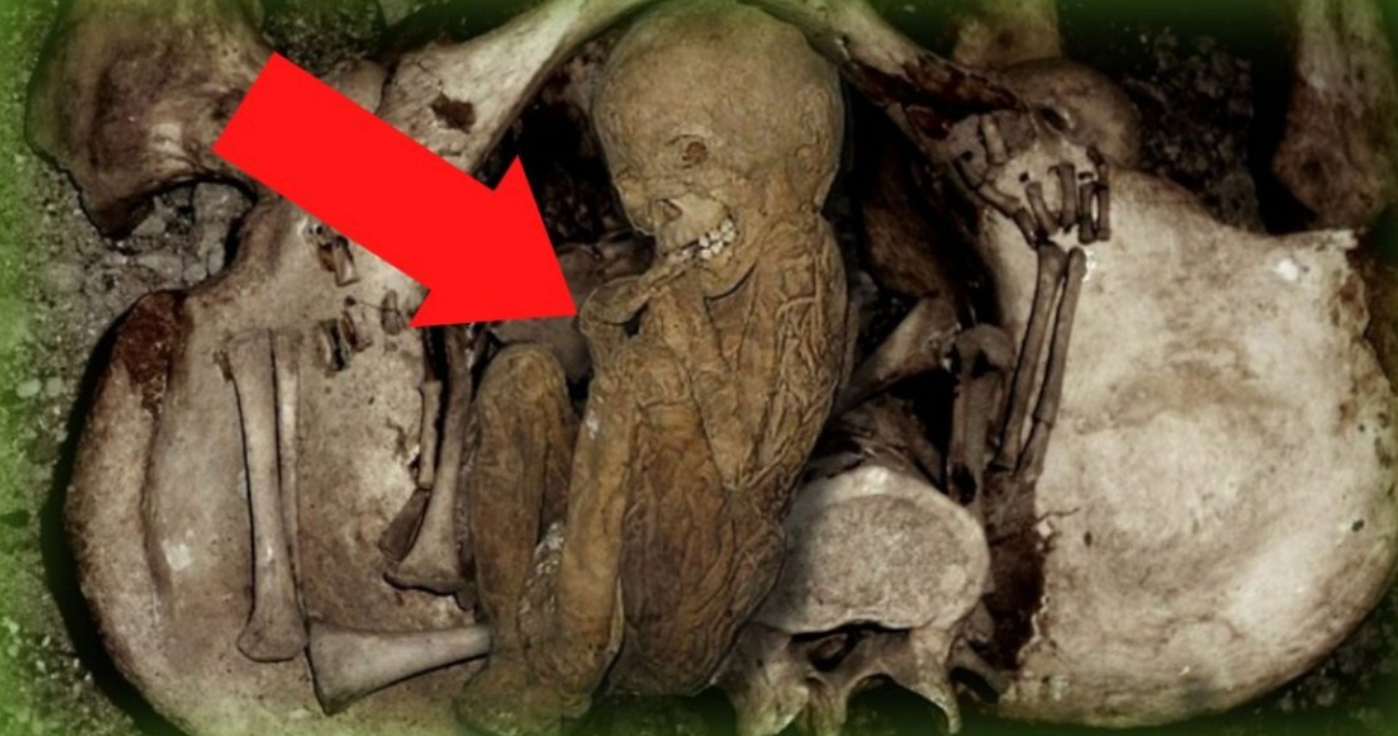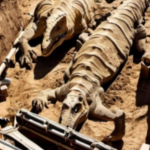Breaking News: Unveiling the Mystery of a 5-Million-Year-Old Mammoth Carcass Reveals an Unexpected Skeleton
- mystery
- June 12, 2024

In the remote Siberian tundra, where icy winds howl across vast expanses of snow and permafrost, a team of scientists made a discovery that sent shockwaves through the world of paleontology. Amidst the frozen landscape, they unearthed the well-preserved carcass of a mammoth, estimated to be over 5 million years old. Yet, what they found inside the mammoth’s frozen remains was even more astonishing: an unexpected skeleton hidden within.

Dr. Natalia Petrov, a leading paleontologist, led the team of researchers on this groundbreaking expedition. Their journey had been fraught with challenges, battling the harsh elements and navigating treacherous terrain, but their perseverance was rewarded when they stumbled upon the mammoth carcass buried beneath a layer of permafrost.
As they carefully excavated the mammoth, the team noticed something peculiar. Embedded within the mammoth’s ribcage was the outline of another skeleton, much smaller in size. At first, they assumed it was the remains of a prey animal that had been consumed by the mammoth. However, further examination revealed a startling truth: the smaller skeleton belonged to a creature of the same species as the mammoth.
The discovery left the scientists baffled. How had two mammoths come to be entombed together in the Siberian ice, separated by millions of years? It was a mystery that defied explanation and challenged their understanding of prehistoric life.

As they continued their investigation, the team uncovered clues that shed light on the enigmatic duo. Analysis of the smaller skeleton’s bones revealed signs of trauma consistent with predation, suggesting that it had been attacked by another animal before meeting its untimely demise.
But what puzzled the researchers most was the remarkable state of preservation of both skeletons. The mammoth carcass showed signs of rapid freezing, indicating that it had been buried in the ice shortly after death. This extraordinary preservation allowed scientists to study the ancient creatures in unprecedented detail, providing insights into their anatomy, behavior, and evolutionary history.
As news of the discovery spread, it captured the imagination of people around the world. The story of the two mammoths, frozen in time for millions of years, became a symbol of the mysteries that lie buried beneath the earth’s surface, waiting to be unearthed by intrepid explorers and scientists.
For Dr. Petrov and her team, the discovery was a reminder of the endless wonders of the natural world and the importance of preserving Earth’s ancient treasures. As they continued their research, they hoped to unlock more secrets hidden within the icy depths of Siberia, unraveling the mysteries of the past and enriching our understanding of the world we inhabit.










